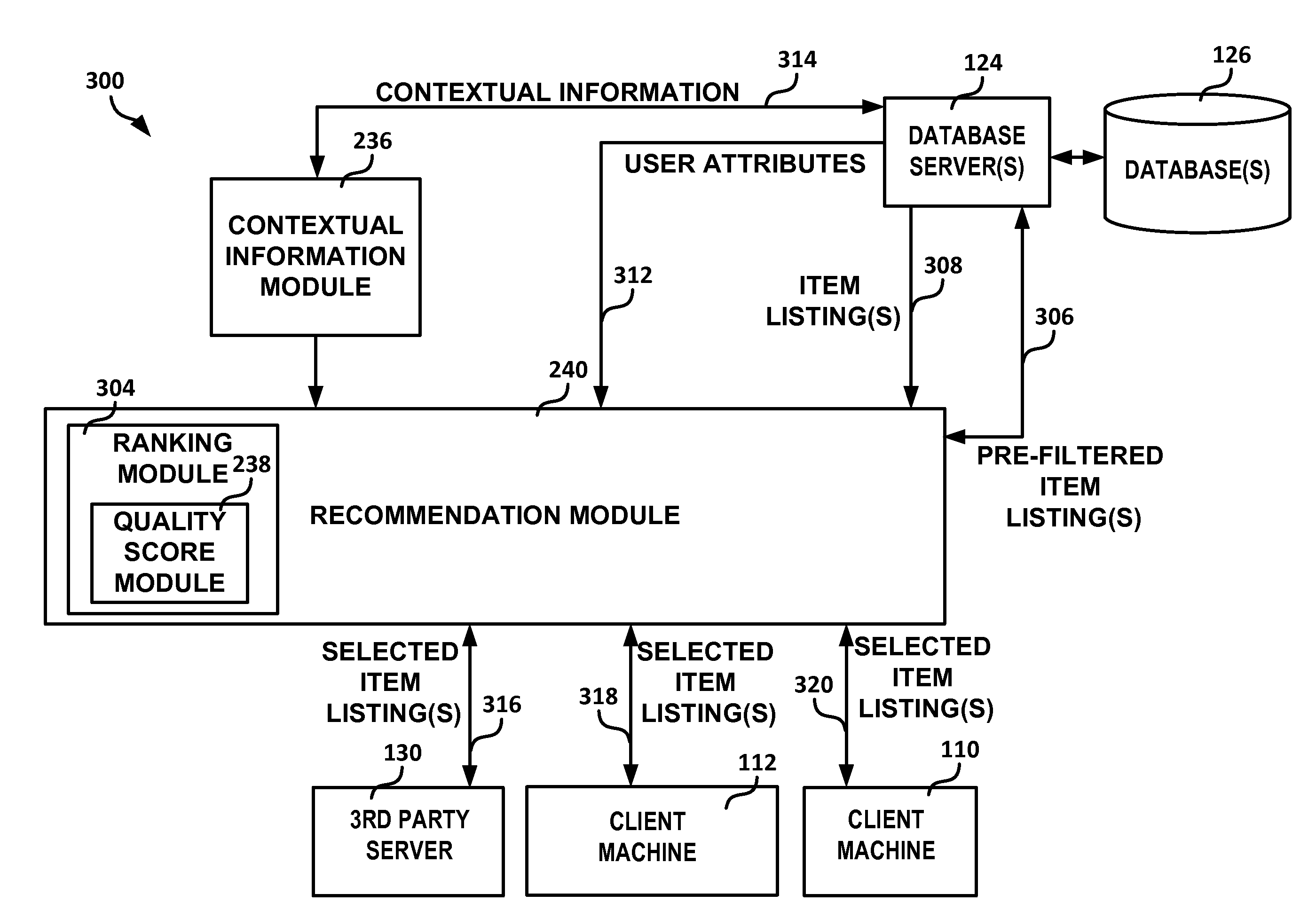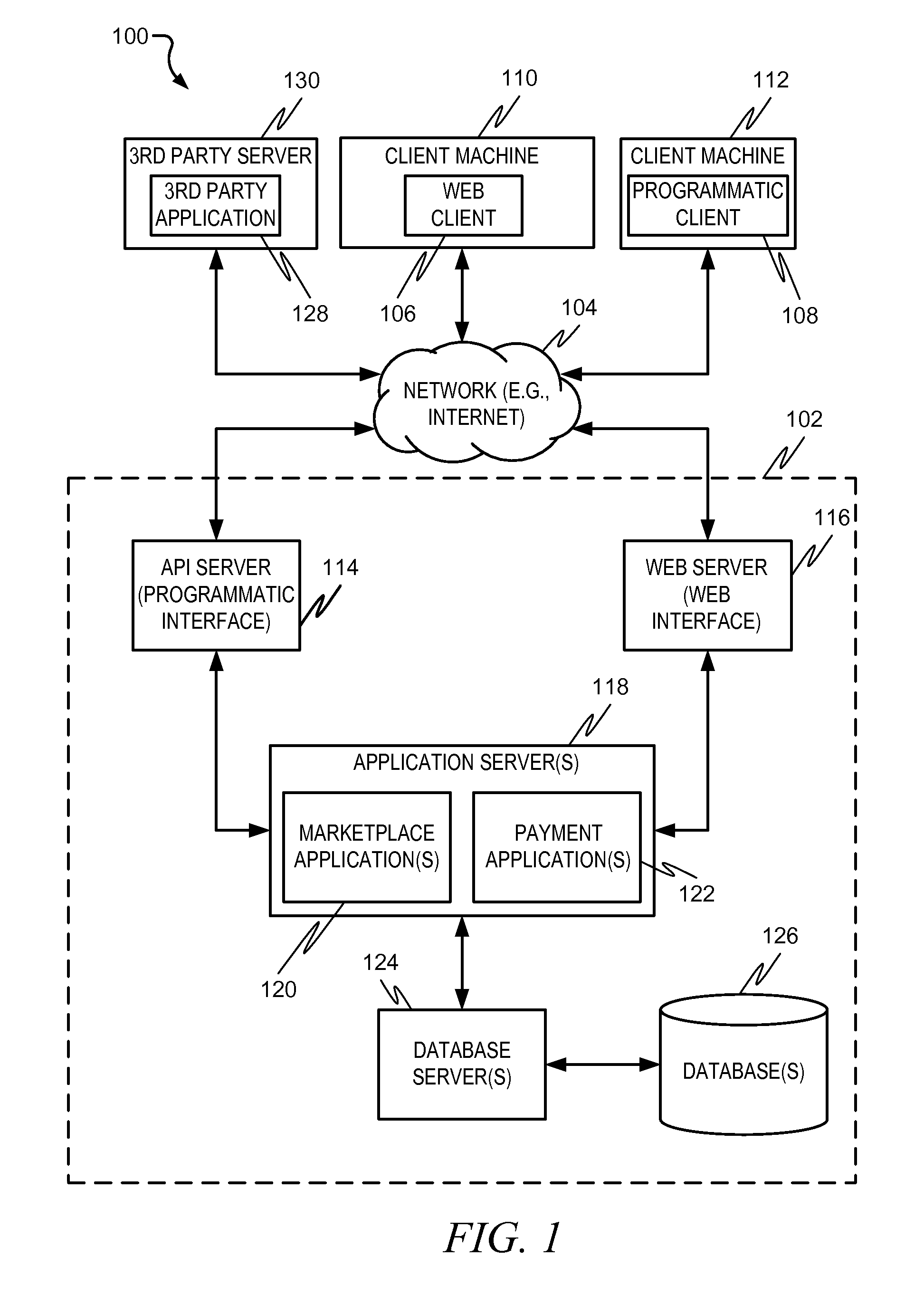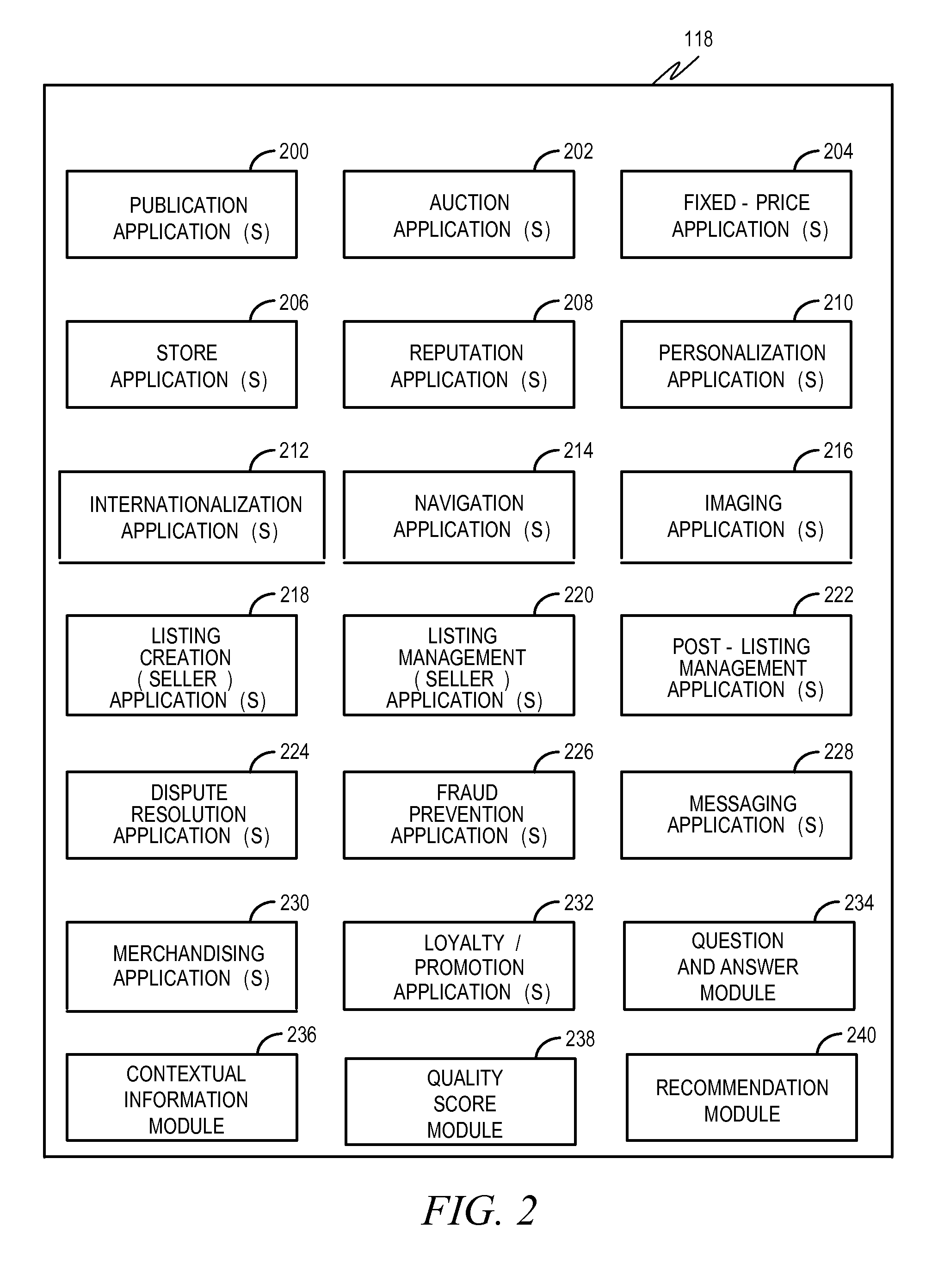Systems, apparatuses, and methods for providing a ranking based recommendation
a ranking and recommendation technology, applied in the field of providing a recommendation, can solve the problems of increasing the amount of time it takes to provide a recommendation to a user, cf and cb have data sparseness challenges, and requiring an increase in computer resources
- Summary
- Abstract
- Description
- Claims
- Application Information
AI Technical Summary
Benefits of technology
Problems solved by technology
Method used
Image
Examples
Embodiment Construction
[0017]The description that follows includes illustrative systems, methods, techniques, instruction sequences, and computing machine program products that embody illustrative embodiments. In the following description, for purposes of explanation, numerous specific details are set forth in order to provide an understanding of various embodiments of the subject matter. It will be evident, however, at least to those skilled in the art, that embodiments of the subject matter may be practiced without one or more these specific details.
[0018]In one or more embodiments, a personalized recommendation is provided to a user through the use of various techniques. The personalized recommendation can be provided using a quality score ranking technique and / or using context information associated with a user's access to a website to filter item listings (e.g., listings of individual item listings or collections of item listings) prior to presenting the item listing to a user. The item listings can ...
PUM
 Login to View More
Login to View More Abstract
Description
Claims
Application Information
 Login to View More
Login to View More - R&D
- Intellectual Property
- Life Sciences
- Materials
- Tech Scout
- Unparalleled Data Quality
- Higher Quality Content
- 60% Fewer Hallucinations
Browse by: Latest US Patents, China's latest patents, Technical Efficacy Thesaurus, Application Domain, Technology Topic, Popular Technical Reports.
© 2025 PatSnap. All rights reserved.Legal|Privacy policy|Modern Slavery Act Transparency Statement|Sitemap|About US| Contact US: help@patsnap.com



